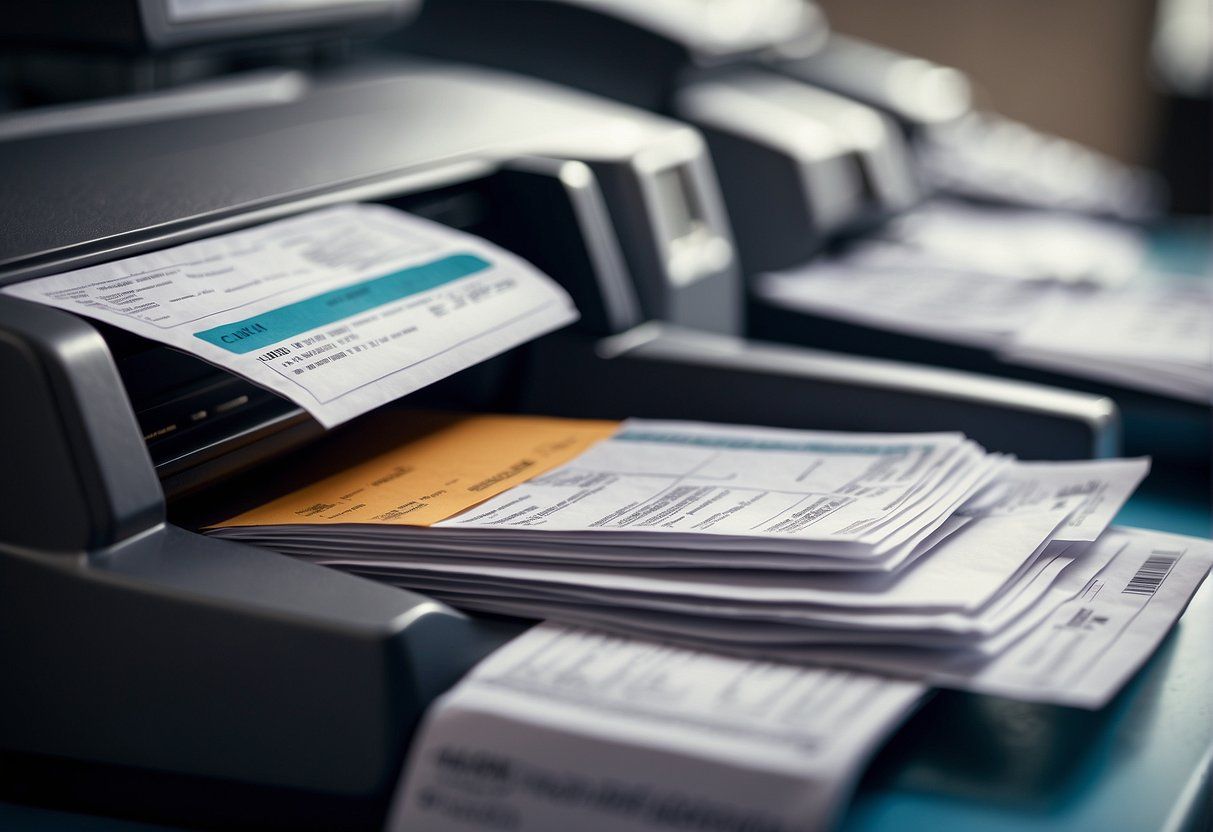Benefits of Automated Invoice Processing

Automated invoice processing stands as a transformative approach for companies looking to streamline their accounting workflows. By introducing software solutions that employ robotic process automation (RPA) and artificial intelligence (AI), businesses can significantly reduce the time spent on manual data entry and invoice management. This technological advancement not only cuts down on processing costs but also enhances accuracy and reduces the likelihood of human error.
The integration of automated systems into invoice processing presents numerous advantages. Enhanced compliance and real-time visibility into financial transactions emerge as clear benefits, offering organizations greater control over their financial operations. Additionally, these systems facilitate better cash management and spending visibility, leading to more strategic financial decision-making. With automated invoice processing, companies also see an improvement in supplier relationships, as it ensures timely payments and minimizes disputes associated with manual handling.
The adoption of automated invoice processing solutions scales with the growth of a business, supporting expansion without the proportional increase in administrative burden. Automating tedious tasks such as approvals and record-keeping frees up valuable time for finance teams to focus on more complex, strategic aspects of financial management. This shift not only boosts efficiency but also contributes to long-term cost reductions, fostering an overall more agile and competitive business in the marketplace.
Fundamentals of Automated Invoice Processing

Automated invoice processing refers to the method by which companies streamline their accounts payable workflowusing advanced technologies. This process reimagines traditional invoice management by reducing manual input and increasing the efficiency of financial transactions.
Understanding Automated Invoice Processing
Automated invoice processing is a system where technology takes the lead in managing invoices from reception to payment. It typically includes capturing invoice data, validating line items, matching purchase orders, and facilitating payments — all with minimal human intervention. Companies that implement this automation can see a transformation in accuracy, speed, and traceability within their financial operations.
Comparing AI and IA in Automation
Artificial Intelligence (AI) and Intelligent Automation (IA) are both crucial to modern automated invoice processing. AI refers to the capability of machines to perform tasks that typically require human intelligence, such as understanding natural language and making decisions. In contrast, IA combines AI with Robotic Process Automation (RPA) to streamline and optimize workflow processes. In the realm of invoice automation, AI can predict and route invoices, while IA focuses on the repetitive tasks of the process.
Role of ML and OCR Technologies
Machine Learning (ML) and Optical Character Recognition (OCR) technologies are pillars of automated invoice processing. ML algorithms learn from historical invoice data to improve the accuracy of data capture and anomaly detection over time. OCR technology converts different types of handwritten or printed invoice documents into machine-encoded text, facilitating easier data extraction for further processing.
Core Elements of Invoice Automation
The backbone of invoice automation lies in several core elements:
- Data Capture: At the outset, invoices are scanned or received electronically, and relevant data is extracted using OCR.
- Invoice Matching: This involves comparing invoice details with purchase orders and receipts, often managed by AI to ensure validity and accuracy.
- Workflow Routing: Invoice approval is handled by predefined rulesets, routing invoices through the proper channels for review and approval without manual oversight.
- Archival and Retrieval: Invoices once processed are stored securely, with easy retrieval options for auditing and analysis.
Each of these elements works cohesively within the technology framework to facilitate a seamless, automated invoice processing system.
Efficiency and Accuracy Benefits

Automated invoice processing brings critical enhancements to the efficiency and accuracy of financial operations. It mitigates human error and expedites data extraction and validation, culminating in both time and cost savings, while elevating consistency.
Enhancing Time and Cost Savings
Automated invoice processing translates to significant time savings for businesses. Automating the typically time-consuming task of data entry not only speeds up the invoice cycle but also enables staff to redirect their focus towards more strategic tasks that add value to the company. Cost savings are observed as a result of lowered labor costs and the elimination of late payment fees due to faster processing.
Reducing Errors and Improving Accuracy
Accuracy is a cornerstone of automated invoice processing. Through the use of sophisticated algorithms and error checking, an automated system greatly reduces the risk of human error. This includes incorrect data entries and missing payments. Automated systems often include advanced validation processes that verify and cross-reference data, ensuring only correct information is processed.
Advancing Process Consistency
With consistency being paramount in financial transactions, automated invoice processing ensures each invoice is handled in a uniform manner. This adherence to a consistent protocol means performance can be reliably measured and optimized. Consistency in processing safeguards against compliance issues and creates a stable environment for ongoing financial management.
Operational Impact and Workflow Optimization

Automated invoice processing brings significant changes to operational efficiency by optimizing critical finance workflows. Companies can reduce processing time and eliminate manual data entry, leading to more streamlined business operations.
Streamlining Approval and Payment Workflow
Automation redefines the approval and payment workflow by minimizing the steps necessary for processing invoices. Traditional manual data entry and approval processes that are prone to human error and typically time-consuming are now replaced by automated workflows. Streamline sequence of actions ensures:
- Efficiency: Automatic routing of invoices to the correct approval authorities.
- Speed: Reduced processing time from days to mere hours or minutes.
Automation’s Role in Accounts Payable
Automated systems profoundly affect the accounts payable department. They establish predefined business rules for invoice matching, which contributes to:
- Accuracy: Reducing discrepancies through precise three-way matching for purchase orders, receipts, and invoice data.
- Compliance: Ensuring payments adhere to company policies and contract terms.
Improving Invoice and Data Management
Invoice management improves with the systematic organization of data, rendering the data entry process more accurate and less cumbersome. Automation's influence leads to:
- Centralization: Invoices are stored and retrieved from a centralized database.
- Transparency: Real-time visibility into the status of an invoice throughout the approval process.
By integrating these subsections into their finance management systems, companies can anticipate a transformation in their operational approach, with benefits spanning from time savings and accuracy, to strategic financial planning and reporting.
Strategic Advantages for Business

The integration of automated invoice processing systems offers distinct strategic advantages that can streamline operations and fortify business relationships. These systems not only enhance internal process efficiencies but also contribute to stronger external partnerships with suppliers and vendors.
Strengthening Compliance and Visibility
Automated invoice processing fortifies a business's compliance efforts through the maintenance of an audit trail that tracks each step of the invoice lifecycle. This traceability ensures adherence to internal policies and industry regulations. By automating, businesses gain:
- Improved Security: Sophisticated permission controls and data encryption safeguard sensitive financial data.
- Enhanced Visibility: Real-time dashboards provide insight into the status and history of transactions, aiding in risk management and oversight.
Leveraging Reporting for Improved Decision-Making
Reporting capabilities of an automated system turn data into actionable insights. Customizable reports allow management to quickly assess financial health and operational productivity. Key benefits include:
- Data-Driven Decisions: Access to real-time financial information allows for prompt and informed business decisions.
- Efficiency Metrics: Analysis of processing times and error rates helps identify areas for improvement.
Elevating Supplier and Vendor Relationships
A robust automated invoice processing system positively impacts supplier and vendor relationships in several ways:
- Prompt Payments: Faster processing can lead to more timely payments, improving the potential for early payment discounts.
- Transparency: Suppliers and vendors appreciate the visibility into payment statuses, fostering trust and collaboration.
By ensuring swift invoice handling and clear communication, businesses can nurture strong, long-lasting partnerships with their vendors and suppliers.
